13 Ways to Refresh Top-Ranking Content for Even Better SEO

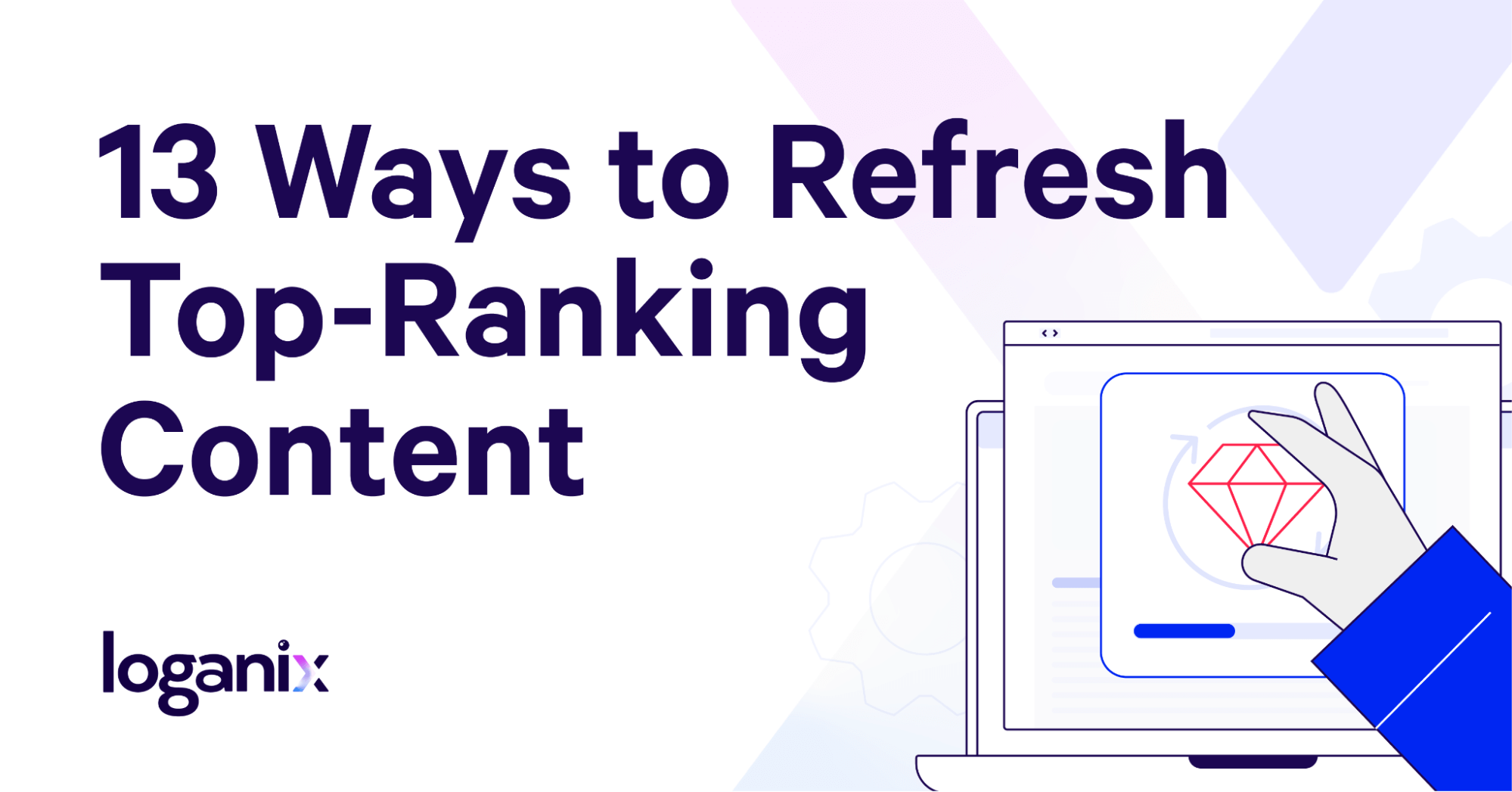
Hand off the toughest tasks in SEO, PPC, and content without compromising quality
Explore ServicesYour top-ranking pages are gold, but they’re by no means untouchable.
Google’s a moving target, competitors are sneaky, and that sweet traffic can dry up fast.
An SEO update revives pages without starting from scratch.
Time to roll up your sleeves and make your best even better 👇
Benefits of Updating Content
Before we jump into the how, let’s take a moment to consider the why:
- Stay Relevant
Trends shift, Google’s algorithm gets crafty, and users want what’s hot now, not last year’s news. Updating keeps your content in the fight, synced with today’s game. Google eats relevance for breakfast, and your readers aren’t far behind, so keep it fresh or get left behind. - Boost Engagement
Stale pages suck; readers bounce in seconds. Refresh them with solid updates, and they’ll stick around, slashing bounce rates. Google sees that and bumps you up. Engaged users mean better rankings, period. - Maintain Rankings
Competitors are gunning for your spot with newer stuff. Frequently updated pages are your moat and keep those rankings locked. Don’t let them steal your thunder. Stay fresh and stay king. - Increase Traffic
Updated content grabs clicks, shares, and links fast. It pulls in more traffic without the grunt work of starting over. You’ll see your numbers climb, simple as that.
The 13 Ways to Refresh Top-Ranking Content
Here’s where the rubber hits the road: 13 dead-simple ways to pump new life into your top-ranking pages:
1. Analyze Performance Dips
Your top pages might be sitting pretty in the rankings, but don’t get cocky. Traffic and engagement can slip even for the best of them. We’re talking drops in clicks, users bailing fast, or folks just not sticking around like they used to.
Catching these dips early lets you fix them before your rankings tank and your edge vanishes.
How:
- Plug your site into Ahrefs’ Site Explorer and jump to the Organic Search > Top Pages report.

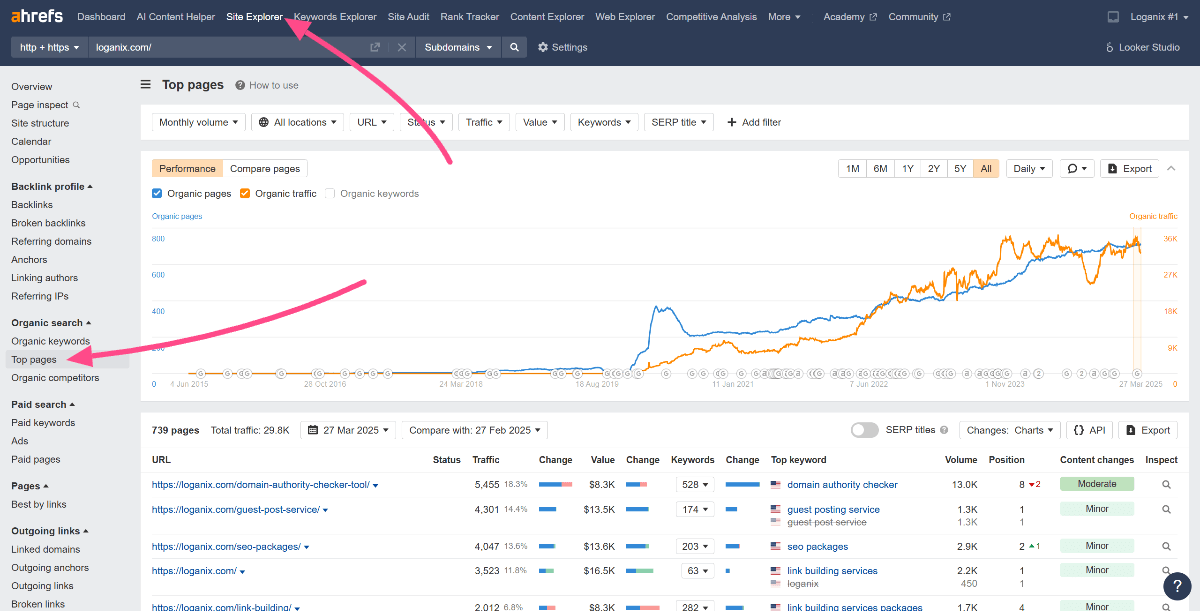
- Compare traffic over the last 6 months. Spot any pages where clicks are sliding south.
- Check the Organic Keywords report for each top page. Fewer ranking keywords or lower positions mean trouble’s brewing.

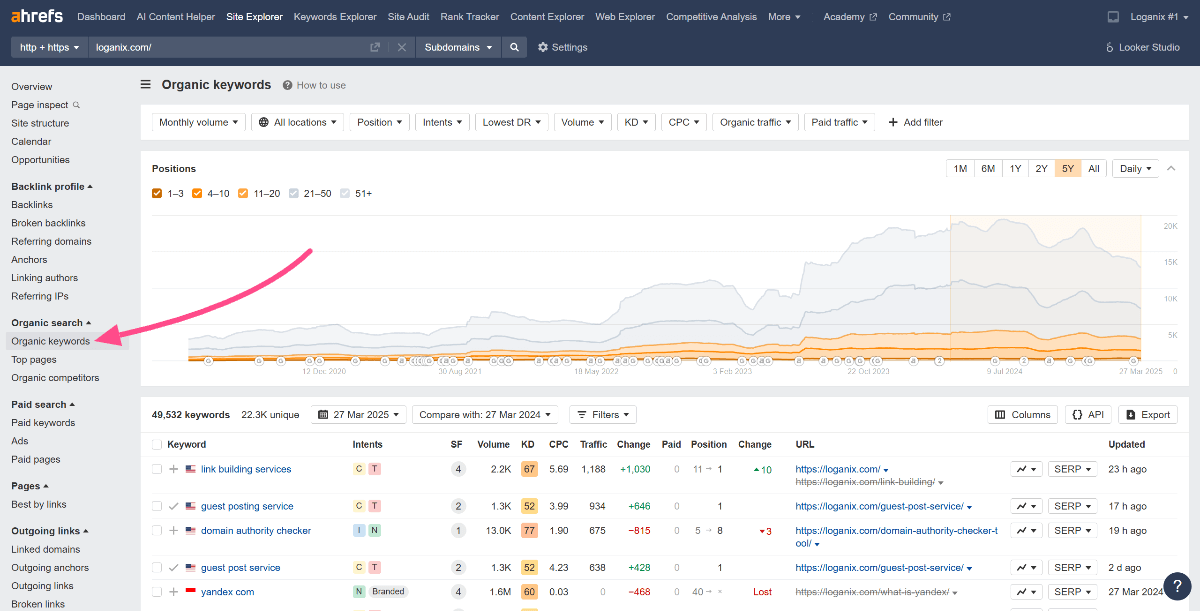
- Look at historical data using the Performance graph. If a page’s trend is dipping hard, it’s losing steam fast.

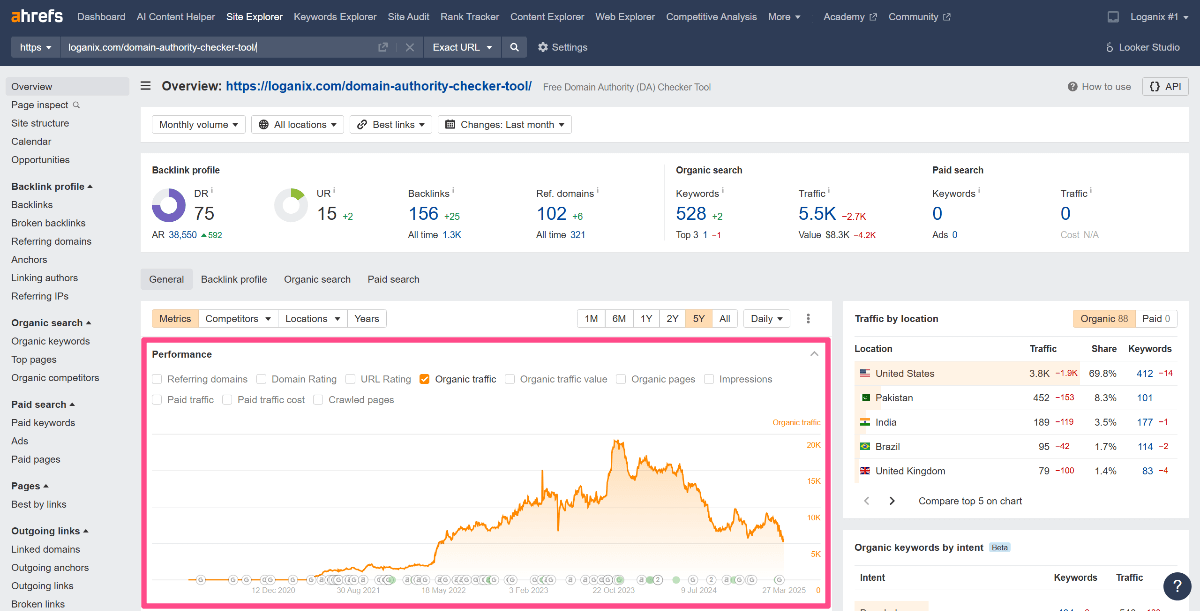
2. Assess Search Intent
Maybe your page ranked high for a how-to guide, but now users want product reviews instead. If you’re off the mark with search intent, your relevance tanks, and Google kicks you down the SERPs.
Staying on top of intent keeps your rankings safe.
How:
- Punch your target keyword into Google and scope out the top 10 results to see what’s winning now. Feel out the vibe. Are they informational (guides, tips), transactional (buy pages), or something else?
- Intent still unclear? Use Ahrefs’ Organic Keywords report to help you out. Filter for drops by clicking the Change column twice, and then cast your eye over the Intents column.


- Using your fresh insights, tweak your content to match by shifting from, for example, a sales pitch to a step-by-step if that’s what’s ranking, or vice versa.
3. Expand Keyword Targeting
Expanding keyword targeting means weaving in related keywords to grab more search traffic. Think of it as casting a wider net without gutting your content and starting over.
Why bother? Because it pumps up your reach fast, snagging clicks from long-tails and variations your competitors might’ve slept on. It’s a low-lift way to squeeze more juice out of what’s already working, keeping your rankings tight while pulling in fresh eyeballs.
How:
- Open Ahrefs’ Keywords Explorer and punch in your main keyword.
- Hit Matching terms and scout for long-tail keywords by adding a word count filter that eliminates all keywords with fewer than three words. Based on your goals and site authority, add two more filters for search volume and keyword difficulty (I’ve gone with a KD up to 50 and an SV from 100 monthly searches).

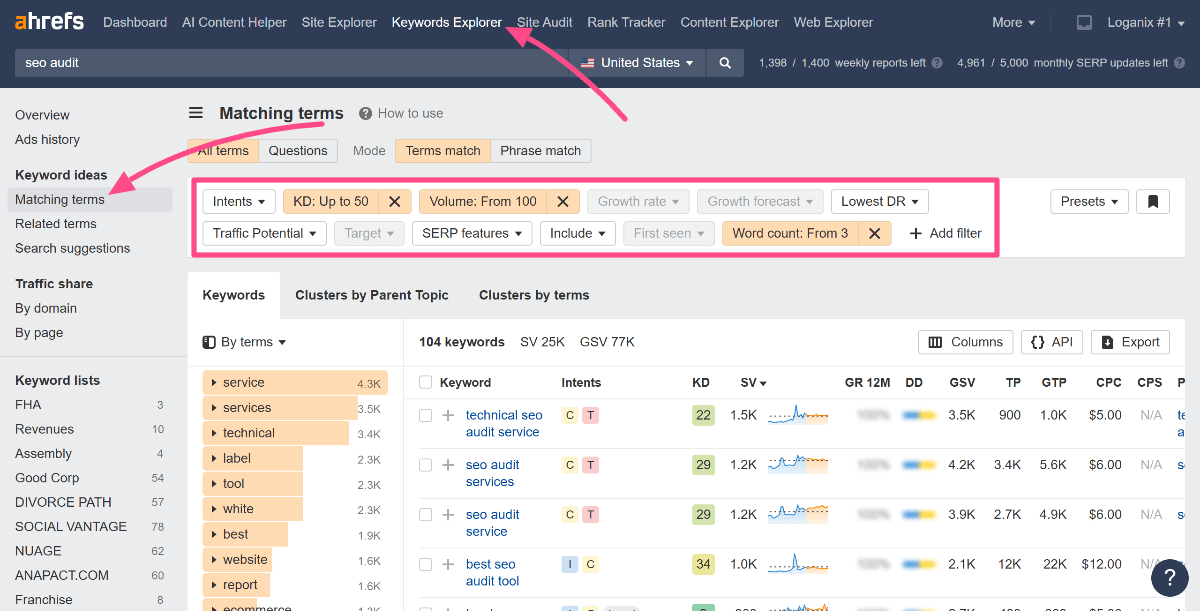
- Work your uncovered long-tail keywords into your content. Slip them into headings and scatter them in the text where they vibe, no stuffing.
4. Refresh Data/Examples
Outdated info is a credibility killer. Google’s not a fan either. Their search engine wants fresh, relevant stuff that proves you’re still in the game.
Not to mention, if your well-performing pages are leaning on stale data, they’re sitting ducks for competitors with sharper, newer content. Updating keeps your authority legit and your audience locked in.
How:
- Swap out, say, 2020 stats for 2025 data. Hit up trusted spots or industry reports for the latest numbers.
- Replace old examples with current tools or trends, so ditch that “2021 SEO plugin” mention for something like “Ahrefs’ beta feature” that’s hot now.
- Double-check your sources and make sure they’re solid and linkable, so readers (and Google) trust the update.
5. Shorten Intros
Nobody’s got time for a rambling preamble, especially not your readers who’ll bounce faster than a bad check, and definitely not Google, which rewards pages that get to the point.
A tight intro keeps your top-ranking content sharp and signals it’s worth sticking around for.
How:
- Trim your intro to three, maybe four sentences tops. Say what matters and cut the fat.

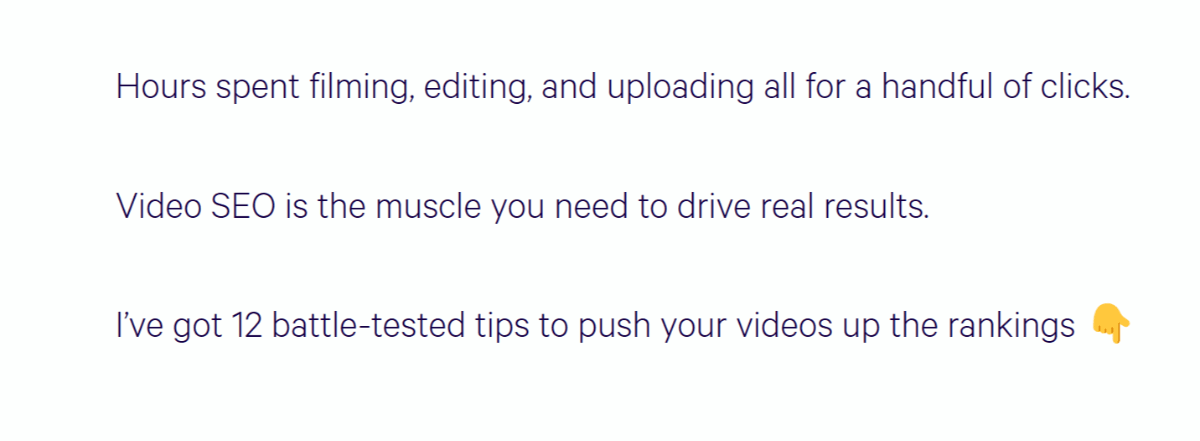
- Move extra context (like backstory or fluff) to later sections if it’s still got juice.
- Test it by reading it out loud; if there’s bloat, slash it again ‘til it snaps.
6. Add Jump Links
Long posts can be a slog to wade through, and users hate scrolling forever to find what they need; jump links (or anchor links) fix that by making navigation a breeze, which juices up your user experience big time.
Google digs it too. Better UX means happier visitors, longer dwell times, and a nod from the algo that keeps your rankings tight.
How:
- Stick a table of contents right up top. We prefer it before the intro, but you can place it after if you like.

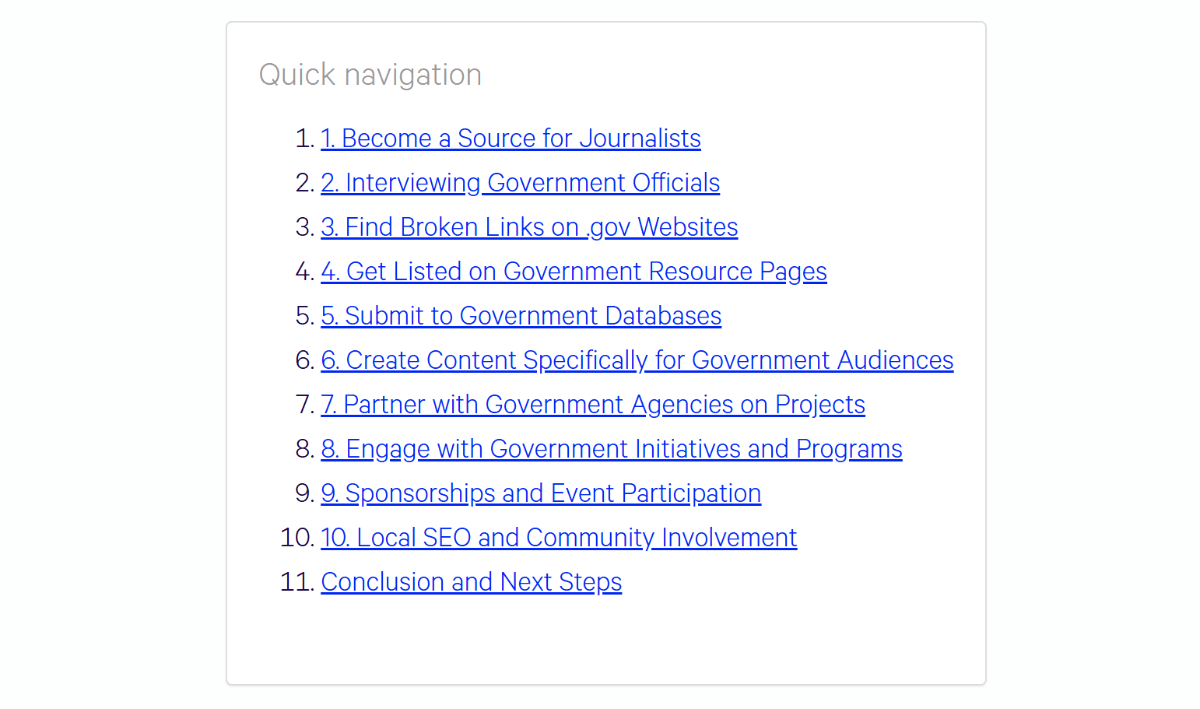
- You can add jump links manually, but if you’re looking for a shortcut, use a plugin relevant to the CMS you’re using. If you’re on WordPress, TinyMCE Advanced isn’t a bad option.
7. Improve Readability
No one’s slogging through a wall of text anymore, not your readers, not Google’s bots. When your content is easy to skim, people stick around longer, boosting that precious time-on-page metric that search engines eat up.
How:
- Break text into short paragraphs. 2-3 sentences max, so it’s not a brick of words.
- Use bullets for lists or steps, making key information easy to digest quickly.
- Bold the must-know points, which grab skimmers’ eyes without slowing them down.
8. Update Visuals
Fresh, crisp visuals signal your page is alive and kicking, boosting appeal for readers while subtly telling search engines you’re still in the game. Outdated graphics, on the other hand, drag your credibility down, so refresh them, and you’ll keep your top-ranking content popping.
How:
- Ditch old screenshots, like that crusty tool interface from 2020, and grab new ones that show the latest version.
- Add relevant alt text to every image. Make them searchable and keep them SEO-friendly.

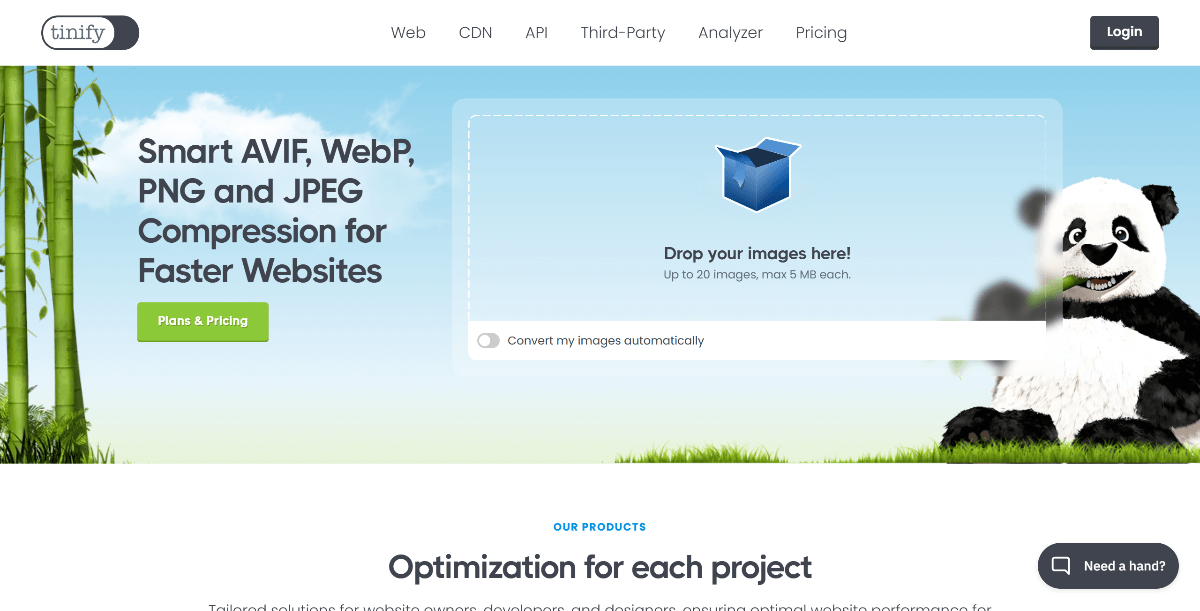
- Compress the files with tools like TinyPNG. This keeps load times fast, because slow pages rub everyone the wrong way.
9. Build Internal Links
Strong internal links boost crawlability, pump up weaker pages with some of that top-page mojo, and keep your rankings locked in because a site that’s easy to explore is a site that wins, period.
How:
- Add links to related posts or services, pointing to a killer blog or your services page.
- Use clear, descriptive anchor text. Think “SEO update tricks” over vague wording like “click here.”
- Looking to boost a page? Scope out high-traffic pages with Ahrefs’ Top Pages report and link from these top pages to give your refresh a hit of link juice.
10. Add FAQs
Adding FAQs means tacking on a tight section of common questions and answers to your page. These questions snag those question-based searches that pop up in SERP features like the People Also Ask (PAA) box, pulling in traffic you’d otherwise miss.
How:
- Hit Google and scroll to the PAA box for your keyword. Grab the juiciest and most relevant questions there.
- Pick 3-5 FAQs that fit your content and write answers that are tight. The answers should be at least 45 words but not exceed 100 words. Otherwise, they will be truncated.


- Write short, keyword-rich answers in 2-3 sentences max, packing in relevant terms naturally, with no fluff.
11. Optimize for Featured Snippets
Featured snippets put you in position zero, above the usual rankings, and they’re gold for traffic. Optimizing for snippets is similar to optimizing for PAA.
How:
- Answer big questions straight up. Keep it tight, 40-50 words in a paragraph or a short list that nails the query.

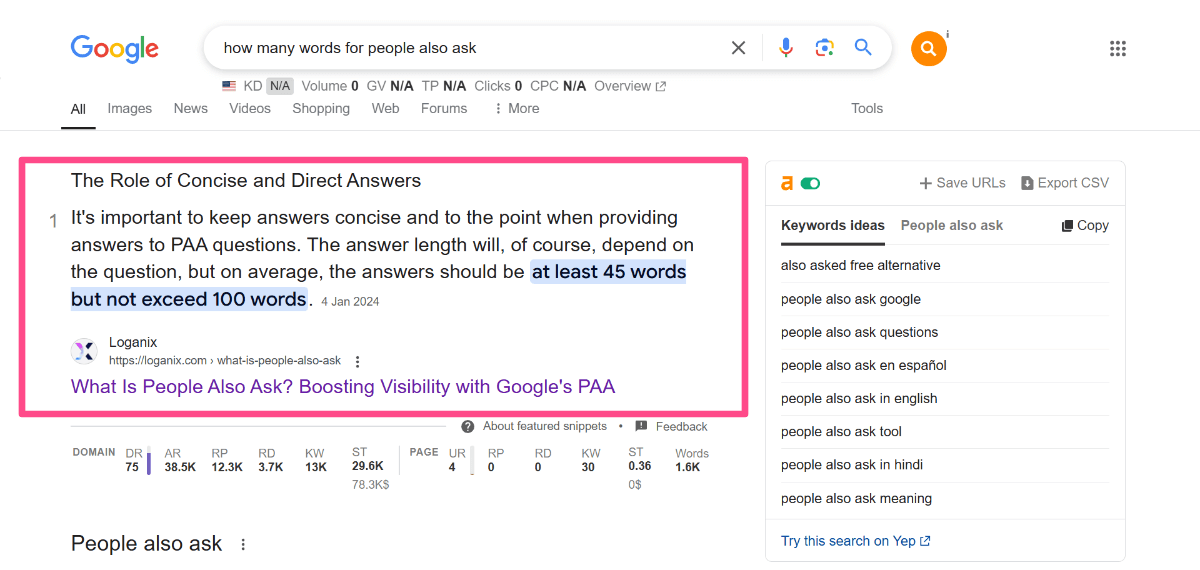
- Use headers that match common searches to wave a flag for Google’s snippet picker.
- Structure it clean. Short paragraphs or numbered steps under those headers, so bots snatch it easily.
12. Re-promote Content
You’ve already put in the effort to refresh that top-ranking post, so why let it sit there gathering dust? Pushing it out again squeezes every drop of value from your update, hitting new eyeballs who missed it the first time and reminding old fans it’s better than ever.
How:
- Post it on social with a hook, something like “Updated: 13 SEO Tips That Crush It!” to grab attention fast.
- Email your subscribers a quick teaser. Try “We revamped our top SEO post—steal the tricks inside.”
- Hit niche communities (e.g., Reddit’s r/SEO) with a legit share. Keep it useful, not spammy, and link back (if the subreddit or community allows it).
13. Monitor Rankings/Engagement
Even top-ranking pages can slip if you don’t keep an eye on them, and without tracking, you’re blind to whether your refresh was a win or a flop. It’s your chance to fine-tune the hell out of your approach, doubling down on the good, ditching the weak, and keeping your SEO game tight.
How:
- Check keyword rankings in Ahrefs by jumping into Rank Tracker, plugging in your target keywords, and seeing if positions are climbing after your update.


- You can also watch traffic shifts in the Organic keywords report by picking your updated page and tracking estimated traffic changes over 4-6 weeks.
Conclusion and Next Steps
SEO updates aren’t rocket science, but they’re damn effective: keep your pages sharp, your traffic climbing, and your rankings locked tight.
Executing this takes time, though, and if you’re buried in deadlines or juggling clients, refreshing content is often put on the back burner.
That’s where Loganix steps in.
👉 Our SEO services are built for this. 👈
Hand off the toughest tasks in SEO, PPC, and content without compromising quality
Explore ServicesWritten by Adam Steele on April 9, 2025
COO and Product Director at Loganix. Recovering SEO, now focused on the understanding how Loganix can make the work-lives of SEO and agency folks more enjoyable, and profitable. Writing from beautiful Vancouver, British Columbia.





















